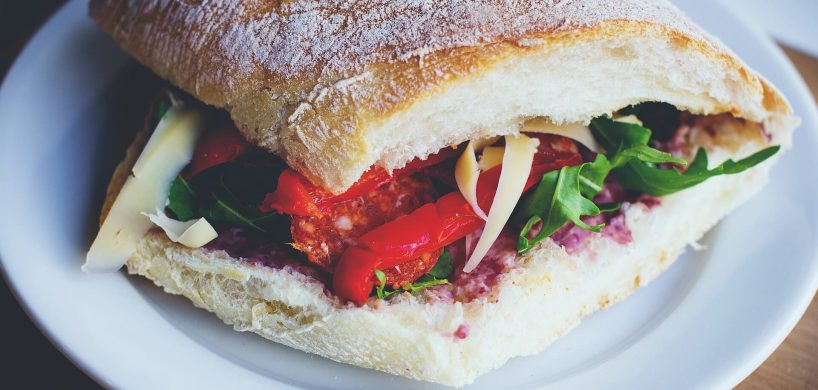A sandwich is a food typically consisting of vegetables, sliced cheese or meat, placed on or between slices of bread, or more generally any dish wherein two or more pieces of bread serve as a container or wrapper for another food type. The sandwich began as a portable finger food in the Western world, though over time it has become prevalent worldwide.
Sandwiches are a popular type of lunch food, taken to work, school, or picnics to be eaten as part of a packed lunch. The bread can be either plain, or coated with condiments such as mayonnaise or mustard, to enhance its flavour and texture. As well as being homemade, sandwiches are also widely sold in restaurants and can be served hot or cold There are both savoury sandwiches, such as deli meat sandwiches, and sweet sandwiches, such as a peanut butter and jelly sandwich.
The sandwich is considered to have been named after John Montagu, 4th Earl of Sandwich, the inventor, it is claimed, of this food combination.The Wall Street Journal has described it as Britain’s “biggest contribution to gastronomy”.
The modern concept of a sandwich using slices of bread as found within the West can arguably be traced to 18th century Europe. However, the use of some kind of bread or bread-like substance to lie under (or under and over) some other food, or used to scoop up and enclose or wrap some other type of food, long predates the eighteenth century, and is found in numerous much older cultures worldwide.
The ancient Jewish sage Hillel the Elder is said to have wrapped meat from the Paschal lamb and bitter herbs between two pieces of old-fashioned soft matzah—flat, unleavened bread—during Passover in the manner of a modern wrap made with flatbread.[9] Flat breads of only slightly varying kinds have long been used to scoop or wrap small amounts of food en route from platter to mouth throughout Western Asia and northern Africa. From Morocco to Ethiopia to India, bread is baked in flat rounds, contrasting with the European loaf tradition.
During the Middle Ages in Europe, thick slabs of coarse and usually stale bread, called “trenchers”, were used as plates.After a meal, the food-soaked trencher was fed to a dog or to beggars at the tables of the wealthy, and eaten by diners in more modest circumstances. The immediate culinary precursor with a direct connection to the English sandwich was to be found in the Netherlands of the seventeenth century, where the naturalist John Ray observed[11] that in the taverns beef hung from the rafters “which they cut into thin slices and eat with bread and butter laying the slices upon the butter”— explanatory specifications that reveal the Dutch belegde broodje, open-faced sandwich, was as yet unfamiliar in England.





